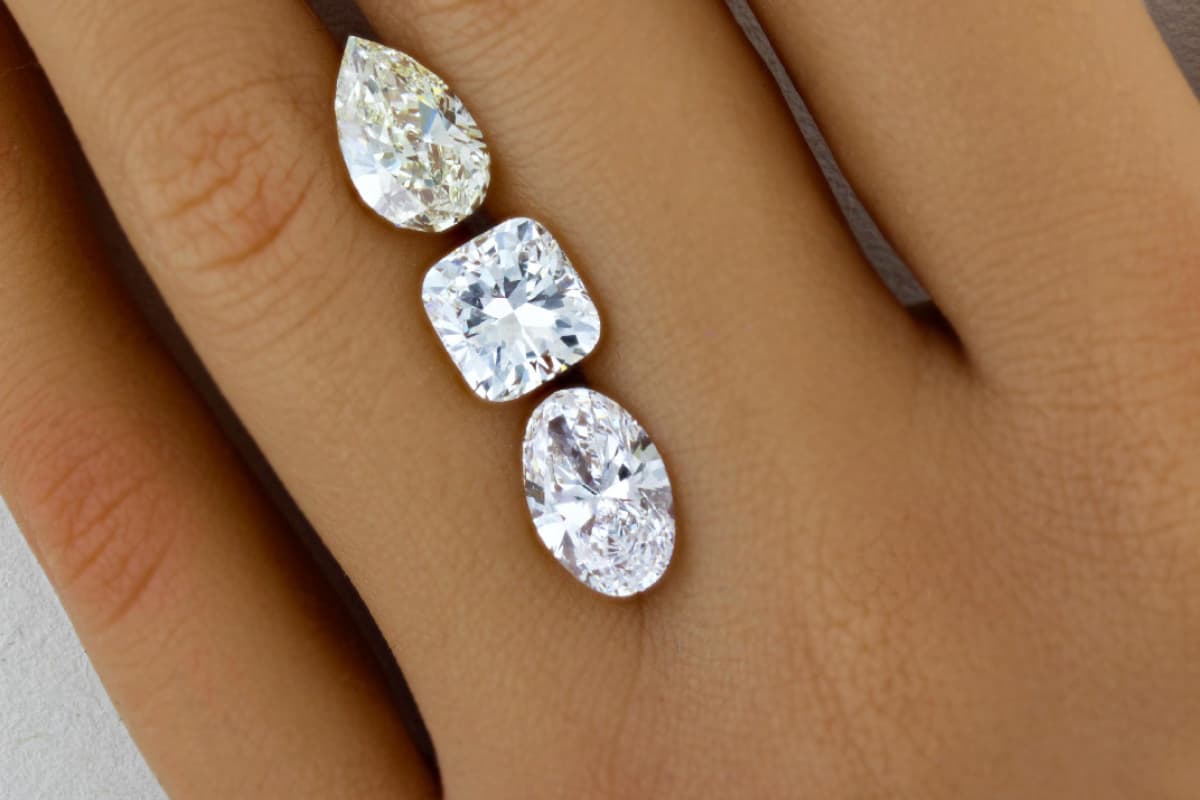With the rise of high quality diamond alternatives and convincing replicas flooding the market, it’s no surprise we’re often asked: How can you tell if a diamond is real?
While some fakes can be incredibly sophisticated, there are a few simple ways to assess a diamond's authenticity, no specialist equipment required. Here are some tried-and-true methods you can use at home to help determine whether a diamond is genuine.
1. Inspect with a Loupe
A loupe is a small magnifying glass, easily found at any jewellery store. Once in hand, focus on three key areas:
-
Inclusions & Imperfections: Real diamonds are formed naturally over millions of years and usually contain tiny internal flaws or "inclusions." A flawless stone may be a red flag for a synthetic or fake diamond.
-
Edges: Genuine diamonds typically have sharp, crisp facet edges. Simulants, such as cubic zirconia, often show smoother, rounded edges.
-
The Setting: High-quality diamonds are usually set in solid gold or platinum. If the mount looks cheap or poorly crafted, chances are the stone isn't the real deal.

2. The Line Test
Draw a straight black line on a piece of white paper, then place the loose stone flat side down over the line.
-
If the line disappears or becomes very hard to see, your diamond is likely real.
-
If the line is clearly visible through the stone, it’s probably a fake.
3. The Fog Test
Breathe on the stone as if you’re fogging up a mirror.
-
A real diamond disperses heat rapidly and won’t stay fogged for more than a second.
-
A fake will fog up and take longer to clear.

4. Observe the Light
Diamonds reflect light in a very specific way:
-
Inside the stone: You’ll see shades of grey and white—this is called brilliance.
-
Outside the stone: Real diamonds scatter rainbow colours onto surrounding surfaces—this is known as fire.
-
A fake often shows rainbow colours inside the stone, a giveaway of lower-quality refractive properties.
5. Check Refraction
Diamonds sparkle intensely because of their high refractive index.
Try placing the stone (if unset) over a newspaper or printed text:
-
If it’s real, you won’t be able to read the print clearly—light scatters too much.
-
A fake will allow you to read through it or show a clear dark reflection.

Still Unsure? Let the Experts Help.
While these methods can help you make an educated guess, they’re not fool proof. For complete confidence, we recommend speaking with a certified gemmologist.
At Hatton Jewels, we bring over 100 years of combined expertise in diamond jewellery and are certified by the Gemmological Institute of America (GIA) the most trusted authority in gemmology.
Book a free appointment today and one of our diamond specialists will be happy to assess your stone and answer any questions you may have.





